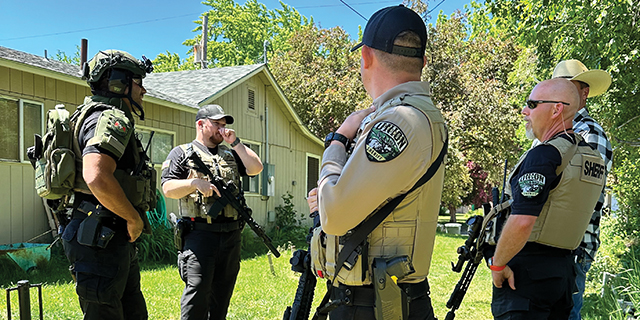College students conducting national forest visitor surveys
Published 11:00 am Friday, October 6, 2023
LA GRANDE — Several students from West Virginia University will be stationed at high-traffic areas on the national forests in the Blue Mountains over the next year to ask recreational users to do a voluntary survey.
Officials from the Wallowa-Whitman, Umatilla and Malheur national forest urge visitors to stop at one of the stations and complete a survey.
“Outdoor recreation is an important part of our national forests,” said Shane Dittlinger, recreation manager for the Umatilla National Forest. “The National Visitor Use Monitoring Program provides the Forest Service valuable information about various recreational uses on a specific national forest, such as the Umatilla.”
Surveys in the Blue Mountains started Sunday, Oct. 1, and will continue through Sept. 30, 2024, said Teresa Fraser, recreation program manager for the Wallowa-Whitman.
The West Virginia students will send the data they collect to the Forest Service’s Washington, D.C., office.
“Within six to nine months, all the data collected will be available to the Forest Service and the public on their website,” Fraser said.
The National Visitor
Use Monitoring Program, which started in 1998, has two main goals, according to the Forest Service:
• Estimate the number of people visiting national forests.
• Gather information about the demographics of forest users, such as how long they stay, what activities they engage in, how much they enjoy national forests and how much they spend during their trips, including in areas adjacent to the forest.
The Forest Service partnered with the University of West Virginia and Robert Burns, professor and director of the university’s Division of Forestry and Natural Resources, to recruit several students for internships during which they will travel to the Blue Mountains.
How are surveys done?
Each student has a list of sites to survey, along with maps, radios and guidelines. The sites are broken down into four types: developed day-use sites, overnight-use developed sites, general forest areas and wilderness areas.
Students are stationed at each site for six hours. Students will try to interview visitors as they leave the area and pass a station.
Because students won’t be on site around the clock, they will also leave 24-hour traffic counters on the road after their shift.
Students will post flyers at certain trailheads with a phone number for recreationists to voluntarily send in recreation information. For areas that have limited cellphone service, visitors are encouraged to save the number and send in their data when convenient.
Learn more about the National Visitor Use Monitoring Program at www.fs.usda.gov/about-agency/nvum.






